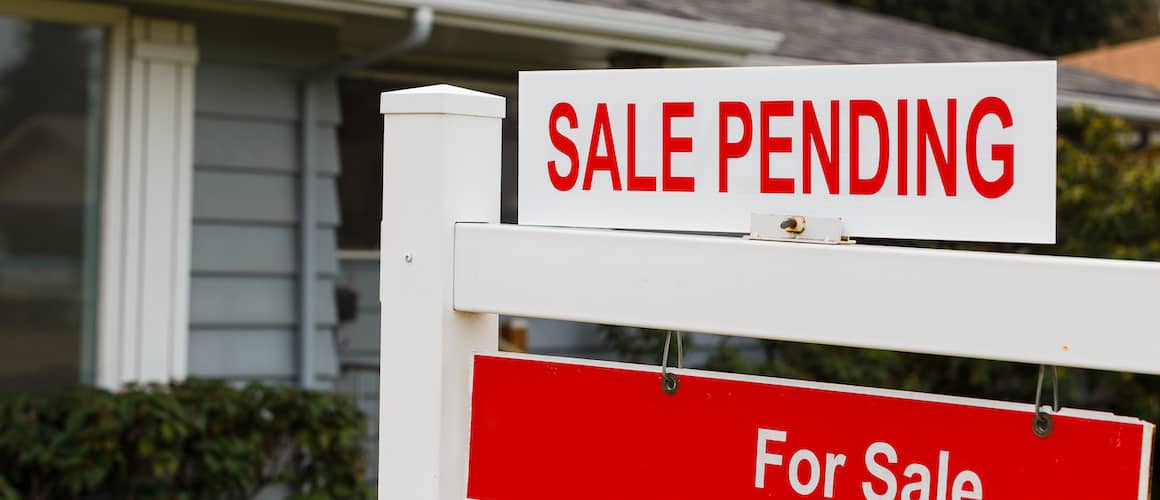Closing Disclosure: What Is It And Why Is It Important?

For most people, buying a house may feel like a treasure hunt that culminates in finding a home, making an offer and moving in. It’s easy to get caught up in the process of buying your dream home, but you’ll need to be mindful of several critical pieces of information, and you’ll have numerous tasks to complete along the way.
After all, you’re not just buying a home. You’re making what is likely your most significant investment – and one of the most important documents you’ll need to tackle to make this investment a reality is your Closing Disclosure.
Let’s walk through what a Closing Disclosure is, the information in it, and how to check it for errors so you’ll feel confident heading into the closing process.
What Is A Closing Disclosure?
A Closing Disclosure is a legal form that details the final terms and costs of a mortgage, including the total loan amount, interest rate, monthly mortgage payments and closing costs.
Mortgage lenders are required to provide borrowers with their Closing Disclosure at least three business days before closing on their mortgage loan.
What’s Your Goal?
Home Purchase
Home Refinance
Tap Into Equity
Why Read The Closing Disclosure Form?
Consider the Closing Disclosure the final version of the Loan Estimate you received when you applied for your home loan.
Although the Loan Estimate estimates the fees for your mortgage, the Closing Disclosure form has the final amounts. It’s important to read your Closing Disclosure carefully and ask about anything you don’t understand.
What Is The Closing Disclosure 3-Day Rule?
Lenders are required to provide the Closing Disclosure at least three business days before closing.
Borrowers have three additional days to accept the loan terms if any of the following terms change after the Closing Disclosure is printed:
- The annual percentage rate increased by more than 0.125%.
- The APR decreased by more than 0.125%, and the finance charge increased.
- The loan added a prepayment penalty.
- The loan type changed, such as from a fixed-rate mortgage to an adjustable-rate mortgage.
It’s worth noting that a decrease in the APR or a reduction in fees won’t always delay closing.
What Is In The Closing Disclosure?
The Closing Disclosure form includes vital information you’ll need to review. The five-page document contains the following standardized sections:
- Loan Terms: The loan terms include the basics of your loan, including the amount you’re borrowing, the interest rate, your monthly payment on the loan, and any prepayment penalty or balloon payment.
- Projected Payments: The monthly mortgage payment breakdown estimates the monthly payment, including the mortgage insurance, and escrow payments to cover property taxes and homeowners insurance.
- Costs at Closing: This section adds up your closing costs, which typically total 2% to 5% of the loan amount, and your down payment for the cash-to-close total. This is how much you need to pay at closing.
- Loan Costs: The second page of the disclosure includes a breakdown of your loan costs, including origination fees, underwriting fees, the mortgage application fee and any applicable prepaid mortgage interest points. It also includes loan-related expenses paid to third parties, including the appraisal fee, credit report fee, title insurance fee and pest inspection fees.
- Other Costs: This section details the rest of your closing costs, including the home inspection fee, prorated property taxes, recording fees, homeowners insurance premiums, homeowners association fees, and home warranty fees.
- Cash-to-close table: The top of the third page of the Closing Disclosure includes a table showing how your cash-to-close fees were calculated, which costs changed from the Loan Estimate, and whether any seller concessions have been made.
- Transaction summary table: This provides the big picture of the transaction for both the buyer and the seller.
- Loan Disclosures: Any boxes checked off in the loan disclosures section apply to your loan. For example, the appropriate boxes will be checked if your loan is assumable, you have an escrow account to collect and distribute your property tax and homeowners insurance payments, or your loan allows for partial payments.
- Loan Calculations: This table outlines how much you’ll pay over the life of your loan, including the total amount spent, the finance charge, the amount financed, the APR and the total interest percentage.
- Other Disclosures: This section includes details about your appraisal and loan, as well as what happens if you don’t make your payments. For example, these disclosures cover whether your state’s laws protect you from being held liable for the loan balance in the event of foreclosure.
- Contact Information: Under this section, you’ll find the contact information for the lender, brokers and settlement agent involved in your home loan.
- Confirm Receipt: Signing the final page of the Closing Disclosure form confirms you received the form. The Closing Disclosure will be available to sign in its finalized form on your closing day.
How To Check Your Closing Disclosure Form
You’ll want to compare the Closing Disclosure side by side with your Loan Estimate. Most of the numbers and terms should be similar, but they may differ because of the time that’s passed between the Loan Estimate and the final costs reported on the Closing Disclosure.
Your real estate agent won’t receive a copy of the Closing Disclosure form from the mortgage lender. Share the form with your agent so they can help you check it for accuracy.
Take plenty of time to review, double-check the figures, and ask questions about the document. Here’s a checklist to help you get started.
| Item | What To Look For |
|---|---|
| Your Name | A small error here can create problems later. |
| Loan Type | There are various types of loans, including multiple government-insured loans. Conventional mortgage loans, which are backed by private lenders, can come with a fixed interest rate or an adjustable rate. |
| Interest Rate | If you locked in your rate, it should be the same as on your Loan Estimate. |
| Loan Term | Typically, your loan term will be 15 or 30 years, but this isn’t always the case. |
| Cash-To-Close Amount | This amount includes your down payment and closing costs. It represents how much money you need to pay at closing. |
| Closing Costs | The fees paid to third parties, such as the appraiser. Usually, you’ll pay 2% to 5% of the loan amount. |
| Loan Amount | This number may be higher than on your Loan Estimate if you rolled your closing costs into your loan. If you’re unsure about this number, ask your mortgage lender. |
| Estimated Total Monthly Payment | The monthly payment listed on the Closing Disclosure will stay the same over the course of the loan for a fixed-rate mortgage, barring changes with the items in your escrow account. With an ARM, your monthly mortgage payment amount may increase after the loan’s initial fixed-rate period ends. |
| Estimated taxes, insurance And Other payments | Your property taxes and homeowners insurance premium may not remain as listed on the Closing Disclosure. Changes to either would make the amount you pay each month go up or down. Changes in HOA dues may also affect your monthly payment. |
After you and your real estate agent carefully review your Closing Disclosure and determine everything is correct, you should be ready to sign.
FAQ
Here are answers to some common questions about the Closing Disclosure.
Your mortgage lender will prepare and send a copy of the Closing Disclosure to you. It’s a good idea to share the Closing Disclosure with your real estate agent, who can help you make sure the document is correct.
Once you receive your Closing Disclosure, you’ll want to check it for errors carefully. If you find a mistake, notify your lender and title company immediately. If changes are significant, the document will need to be revised, pushing your closing back at least a few days since you’ll have to review your updated Closing Disclosure form at least three business days before your new closing date. Once you and your lender sign the Closing Disclosure, no changes can be made to the mortgage terms.
No, but you’re very close to closing on your home now. Your mortgage lender will need to prepare your closing documents, and you’ll need to sign them to complete the home buying process.
The Bottom Line
The Closing Disclosure is an itemized, comprehensive list of the transaction and all the costs you’ll need to pay at closing and throughout the life of your mortgage loan. When you receive your Closing Disclosure form at least three business days before your closing day, compare it to your Loan Estimate and mention any concerns to your lender as soon as possible.
Find A Mortgage Today And Lock In Your Rate!
Get matched with a lender that will work for your financial situation.











